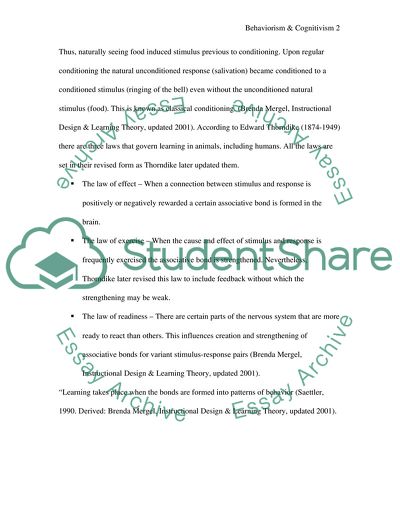Cite this document
(“A Comparative Study: Behaviorism and Cognitivism Essay”, n.d.)
Retrieved from https://studentshare.org/education/1535336-a-comparative-study-behaviorism-and-cognitivism
Retrieved from https://studentshare.org/education/1535336-a-comparative-study-behaviorism-and-cognitivism
(A Comparative Study: Behaviorism and Cognitivism Essay)
https://studentshare.org/education/1535336-a-comparative-study-behaviorism-and-cognitivism.
https://studentshare.org/education/1535336-a-comparative-study-behaviorism-and-cognitivism.
“A Comparative Study: Behaviorism and Cognitivism Essay”, n.d. https://studentshare.org/education/1535336-a-comparative-study-behaviorism-and-cognitivism.


